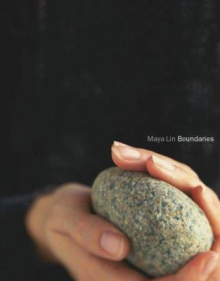
The Vietnam Veterans Memorial is one of the most frequently visited public memorials under the maintenance and jurisdiction of the United States National Park Service. The memorial is a remembrance of those who gave their lives, and provides solace to those who are still alive--family, friends and veterans. What came to be known as the Vietnam War, and the involvement of the United States, was one of the most tumultuous, contentious and divisive periods in the modern history of our country. The history of the creation of the memorial was equally fraught with similar factors and circumstances. In his book, A rift in the Earth : art, memory, and the fight for a Vietnam War memorial, James Reston, Jr. documents the warlike road to creating a site of peaceful remembrance, and about the rather unlikely person who was its creator, Maya Lin.
In her senior year, majoring in archtecture at Yale University, Maya Lin submitted a proposal to a competition to design a Vietnam Veterans Memorial. All entrants were given numbers so that the proposals were judged soley on merit and adherence to requirements, one of which was to include the 57,000 names of those killed and missing. Lin's proposal was selected from 1,421 entrants. From the inception of her design, with the guidance and critiquing of her professor, who thought it was eccentric, to the completion of the memorial there were issues: it was a disrespectful monument; the designer was the target of virulent gender, racial and ageist comments and slurs; there were attempts to modify the original design; and up to, and including the day of the opening ceremony of the completed memorial, Maya Lin received cursory acknowledgement for her work. With time, opinions changed, and Maya LIn moved on with her life and her ability to brilliantly conceive of other memorials that would embody what she envisioned for her first design, "It's not meant to be cheerful or happy, but to bring out in people the realization of loss and a ... healing process." At some point she made the decision to stop creating memorials, and has proceeded with other work in architecture and sculpture.
Boundaries is an autobiographical account of her life told through the creative process that is foundational to who she has always been, even though she never dreamed of being an artist. As a child she was interested in animals and nature, had few friends but never felt lonely, and created her own world of paper houses and people. If there are connections to art, they come from her parents: her mother was a poet and her father a ceramicist, both of whom were immigrants from China to the United States. Her artistic inspiration often is based on curiosity and resulting research on many subjects. For an artist whose medium is visual, Lin has a great respect and connection with the written word and ideas. For her there are no separations, no boxes, only connections and expansions. The layout of this book is concentric with Maya Lin's explanation of who she is, where she comes from ethnically and culturally, and the ways she envisions her art. A companion book is Maya Lin: systematic landscapes. As a young university student, who was jettisoned onto the public stage with both acclaim and acrimony, she was not completely inured to the hatred and anger, but recovered. Maya Lin has been stalwart and true to herself and her art. I have a very strong feeling that she does not see herself as exceptional in any way, as an artist or as a human being, however Maya Lin is exceptional and peerless in what she creates and how she lives. She is a leader and innovator to whom we can look for our own inspiration. There is more information about Maya Lin's past and current architecture and art projects at the Maya Lin Studio.
Books about Maya Lin for adults, teens and children can be found here.